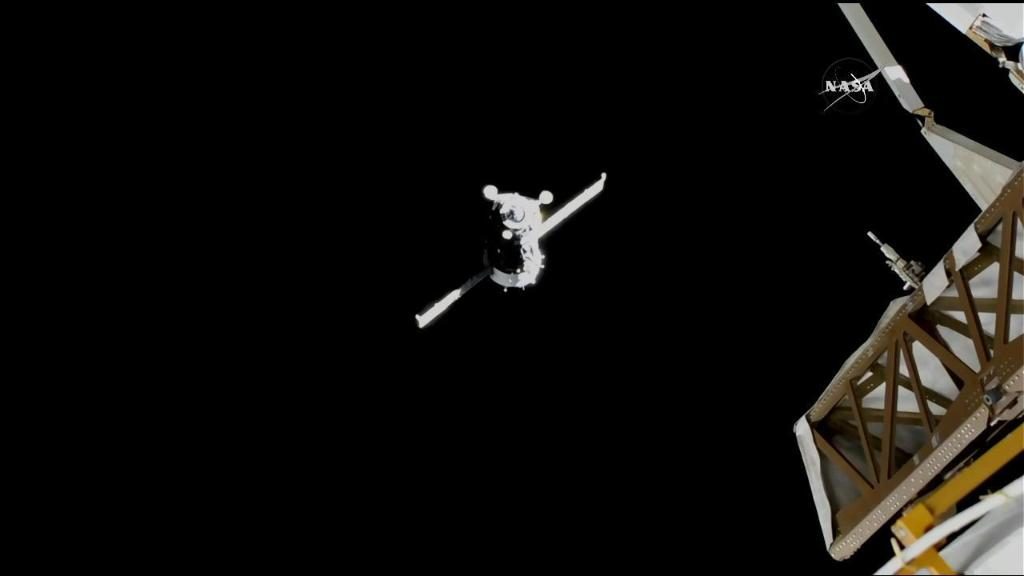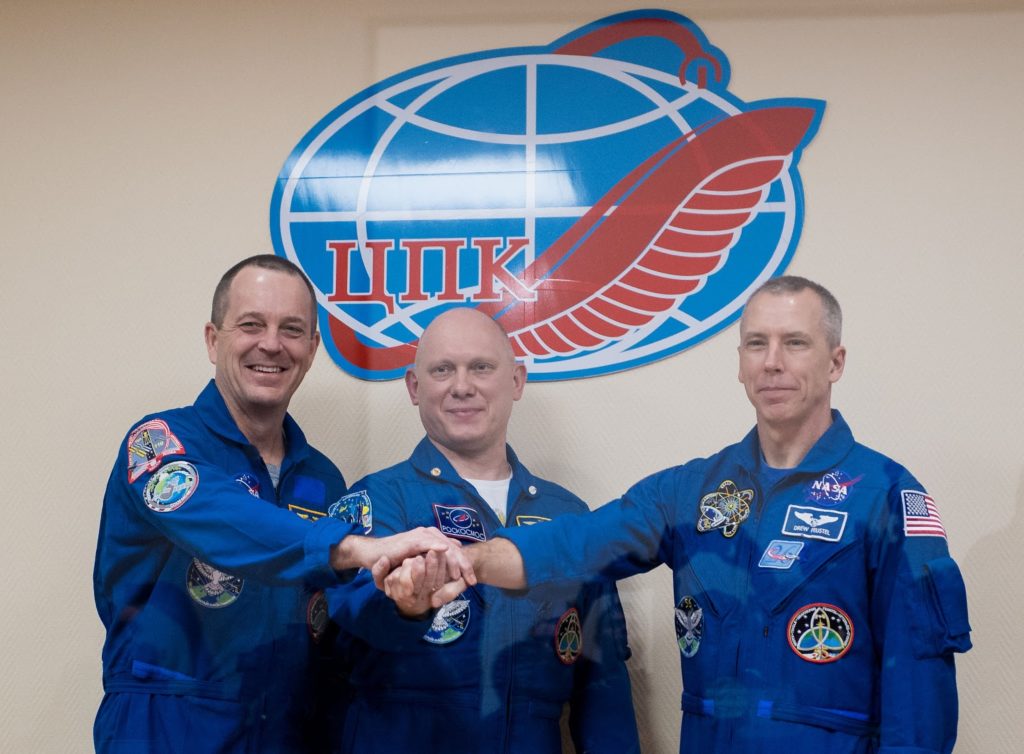 |
|
Space station cameras sight the Soyuz MS-08
spacecraft just meters away from docking to the Poisk module on March 23, 2018. Credit: NASA TV |
Two days after blasting off from the
Baikonur Cosmodrome in Kazakhstan, a Russian Soyuz capsule ferrying
the Expedition 55 veteran trio of spaceflyers from Russia and America
successfully docked at the International
Space Station (ISS) Wednesday afternoon.
Poisk module on the Russian segment of the space station at 3:40 p.m. EDT while
both spacecraft were sailing approximately 254 miles (406 kilometers) over Serbia
in orbital darkness.
includes Soyuz Commander Oleg Artemyev of
Roscosmos and astronauts Ricky Arnold and Drew Feustel of NASA. They now begin a 5 month stay at the orbiting
research lab.
have docking,” announced NASA commentator Rob Navias during a live broadcast of
the high flying events on NASA TV.
successfully arrived at the International Space Station, sliding into the Poisk
module.”
later at 5:48 p.m. EDT and the new trio floated from the cramped Soyuz into the
voluminous research lab.
population has doubled.”
3 highly trained humans was closing in at 0.1 km/sec after conducting a 122
degree fly around of the station.
provided exquisitely stunning views of the rendezvous and docking.
 |
|
Space station cameras sight the Soyuz MS-08
spacecraft just meters away from docking to the Poisk module on March 23, 2018. Credit: NASA TV |
comprising two NASA astronauts and one Russian cosmonaut had launched aboard their Soyuz MS-08 spacecraft from the
Baikonur Cosmodrome in Kazakhstan at 1:44 p.m. EDT Wednesday (11:44 p.m.
Baikonur time) into the plane of the space stations orbit.
choreographed series of thruster firings.
automated.
Navias. “It was a text book rendezvous and a smooth docking.”
The crew then conducted leak checks to confirm the docking
was airtight with no issues.
full complement of six astronauts and cosmonauts living and working on the
orbiting outpost.
After pressure were equalized the hatches were opened
between the two spacecraft at 5:48 p.m. EDT as they were soaring 254 mi (406
km) over the northern coast of Australia.
second and Artemyev last.
“All six crewmembers are now together,” said Navias.
Feustal, Arnold
and Artemyev join the existing trio of crew members comprising Scott Tingle
of NASA, Expedition 55
Commander Anton Shkaplerov of Roscosmos and Norishige Kanai of the Japan
Aerospace Exploration Agency – already on board since launching on Soyuz MS-07
in December 2017.
then gathered for the traditional welcoming ceremony in the Russian Zvezda
module and congratulations from Russian ground control and their families back
on Earth.
“You guys look great on orbit,” said Bill
Gerstenmaier, NASA’s director of spaceflight. “We can hardly wait for you to
get busy and start doing lots of great work for us.”
continuously occupied for more than 17 years.
the station until June 2018, while Feustel, Arnold and Artemyev are slated to
return to Earth in late August after 167 days on orbit.
repair and upgrade the Hubble Space Telescope – and the second for Arnold and
Artemyev.
on the U.S. segment from three to four, allowing NASA to maximize time
dedicated to research on the space station,” said NASA.
science experiments.
to test materials, coatings and components of other large experiments in the
harsh environment of space; a study on the effects of microgravity on bone marrow
and blood cells produced in bone marrow; and a newly-developed passive nutrient
delivery system for the Veggie
plant growth facility.”
 |
| The Expedition 55-56 crew poses for a picture at the conclusion of a press conference, Tuesday, March 20, 2018 at the Cosmonaut Hotel in Baikonur, Kazakhstan. Credit: NASA/Joel Kowsky |
April 2 with on the SpaceX Falcon9/Dragon CRS-14 flight carrying over 5000
pounds of science and supplies to the ISS.
ULA, Boeing, Lockheed Martin, Orbital ATK and more space and mission
reports direct from the Kennedy Space Center and Cape Canaveral Air Force
Station, Florida.
Earth and Planetary science and human spaceflight news: www.kenkremer.com –www.spaceupclose.com –
twitter @ken_kremer – ken
at kenkremer.com



